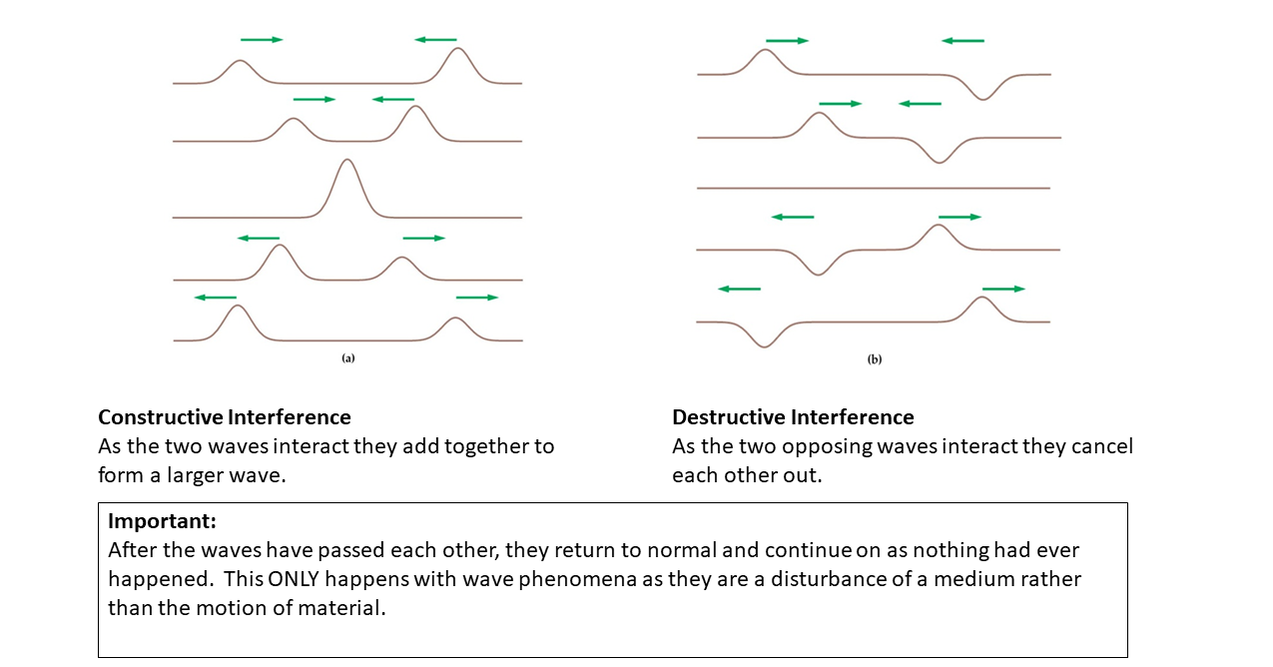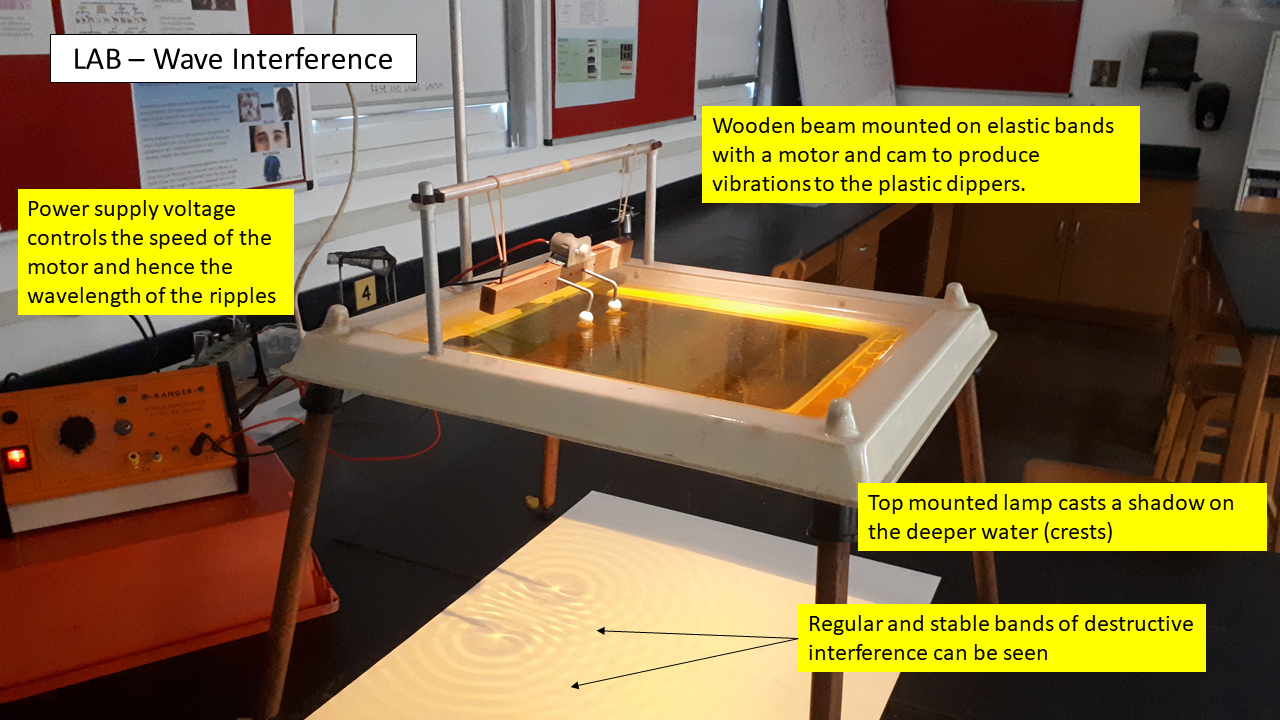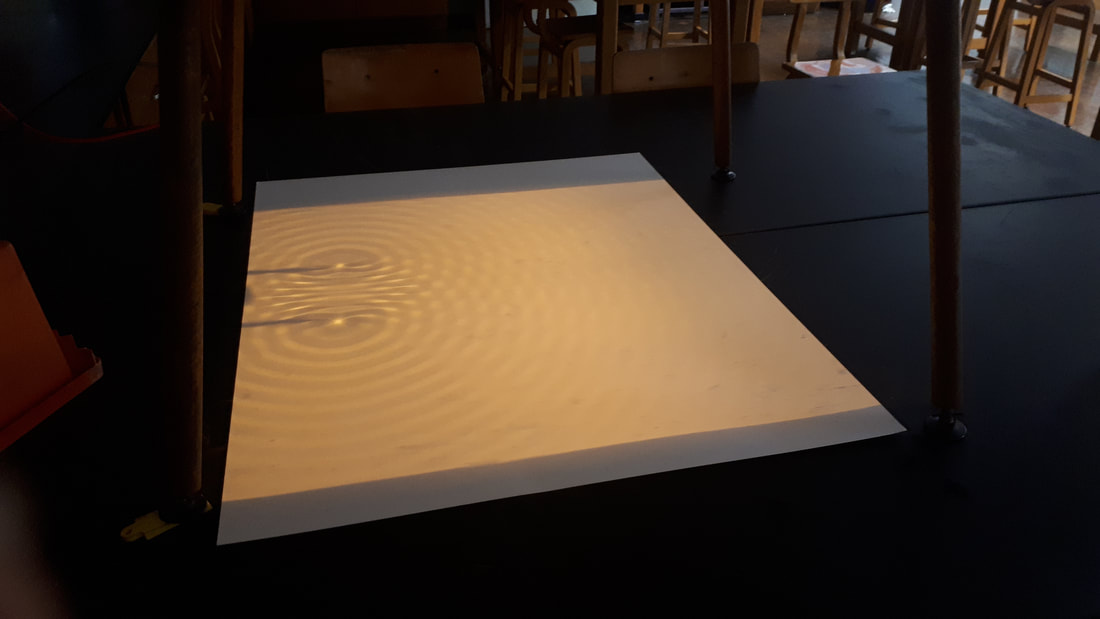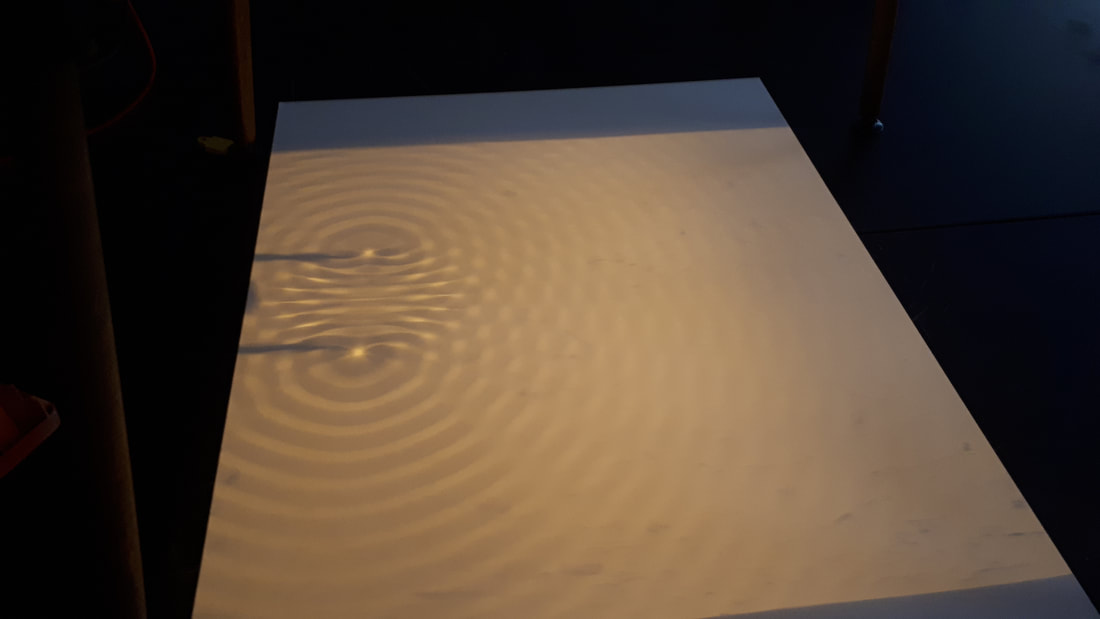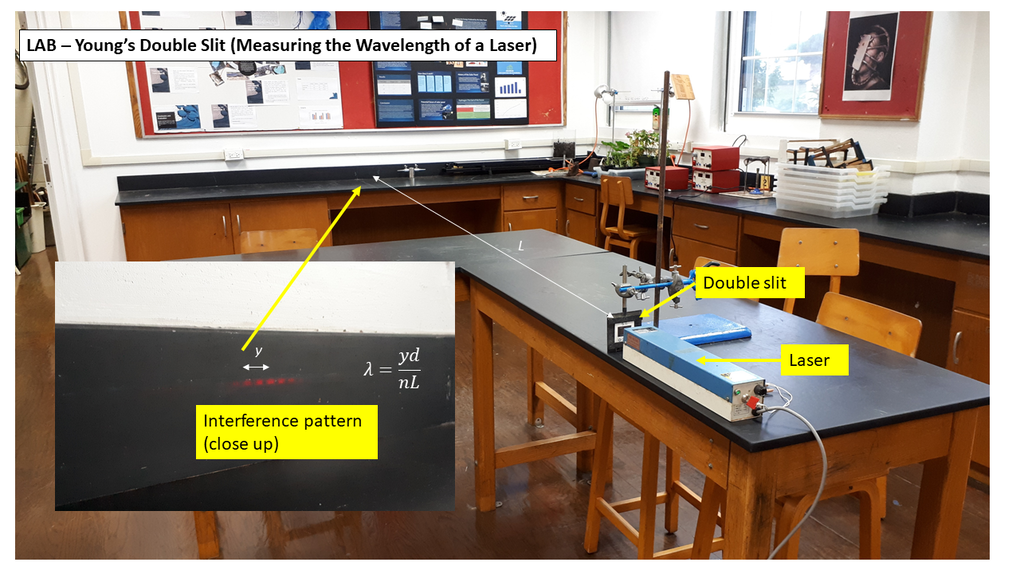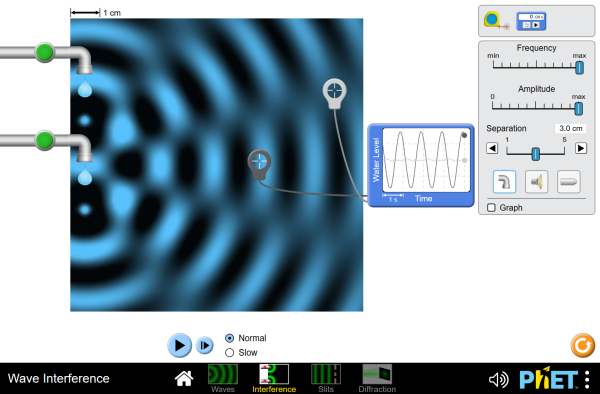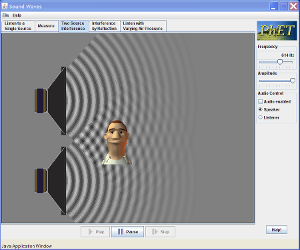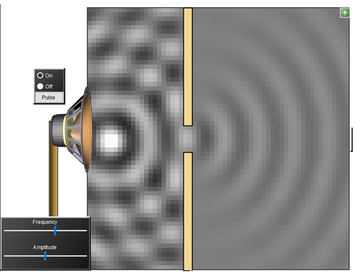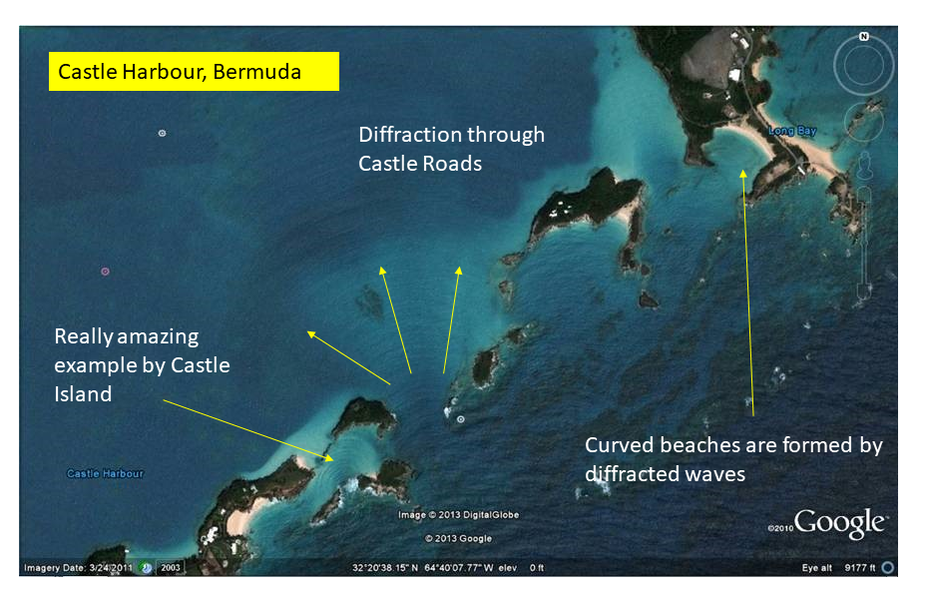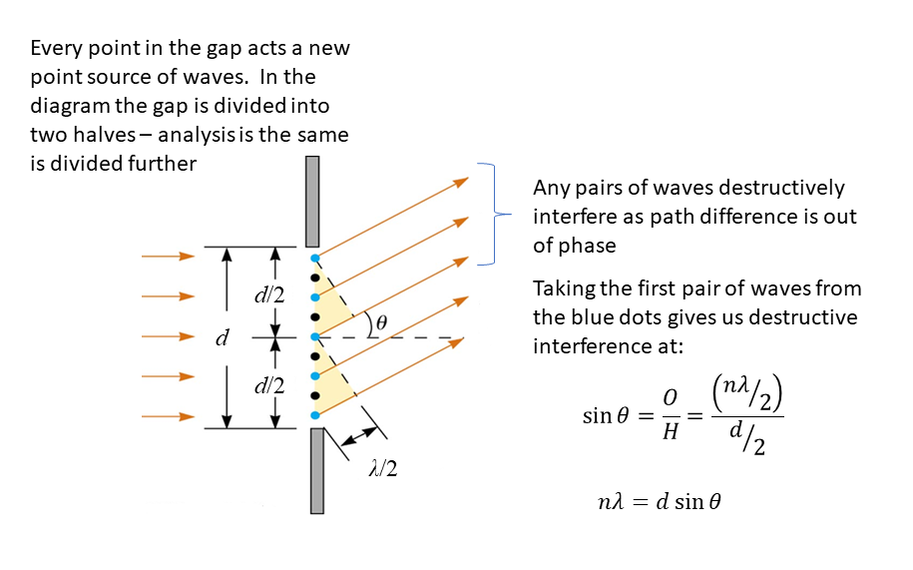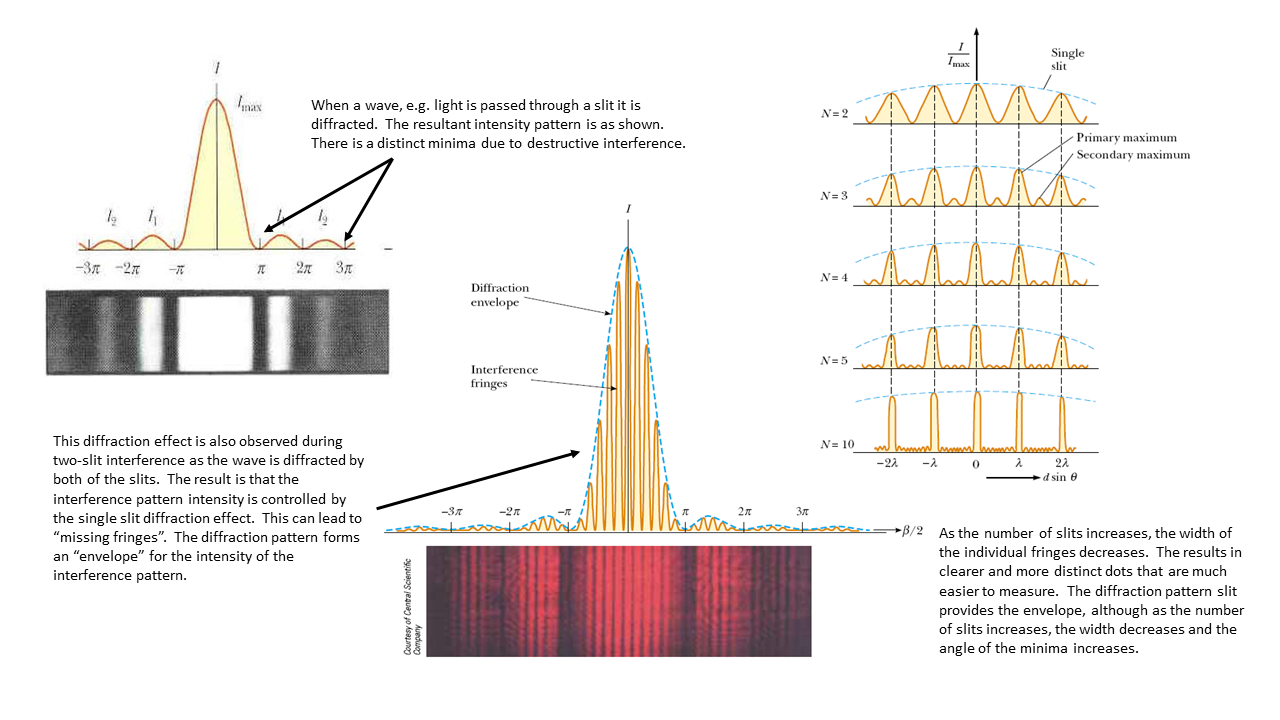Image from Google Earth of wave diffraction in Castle Harbour, Bermuda. Note that there are two good examples, one at the bottom left that is through a tiny gap between Charles and Rushy Islands that has produced almost perfectly circular waves, the other right in Castle Roads itself that has less curvature as it is a wider gap. This image was spotted by a student, Peter Cooper, a few years ago when he was writing a report about a project on Nonsuch Island.
|
Optics >>
|
6.1 - Superposition of Waves (recap)
Objectives:
- To understand what happens when two waves meet each other, both in phase and out of phase.
When two waves meet, if the crests and troughs coincide we get CONSTRUCTIVE interference. If they are completely out of phase, the crest of one cancels out the trough of the other and we have DESTRUCTIVE interference. This assumes that the amplitude and the wavelengths of the wave are the same - i.e. that they are monochromatic.
6.2 - Interference
Objectives:
- To understand the concept of interference from two sources, such as a double slit.
- To be able to calculate the wavelength from a simple interference pattern (lab work).
- To know some applications of this effect.
The position of the MAXIMA (bright fringes) is given by:
\[n\lambda=d\sin{\theta}\]
\[n\lambda=d\sin{\theta}\]
6.3 - Diffraction
Objectives:
- To understand the concept of diffraction of a wave as it passes through a single slit.
- To be able to recognise a diffraction pattern.
- To be able to calculate either the wavelength or the slit gap from a diffraction pattern (lab work).
When a wave meets a barrier or a slit we see changes as it goes around the edges. Typically we consider gaps. If the gap is much larger than the wavelength, the wave passes through with very little distortion except at the edges. If the gap is approximately the same size as the wavelength, we get almost circular waves formed. This is because the wave in the gap acts like a point source.
6.4 - Interference and Diffraction Together
Objectives:
- To be able to draw or recognise the pattern formed from a double-slit experiment where both the separation and the gap width have an effect on the wave. (lab work).
Rayleigh's Criterion (see PPT below)
6.5 - Thin Films
Objectives:
- Understand that the extra path length due to transmission and reflection of light through a thin film can cause interference patterns.
- Be able to calculate the thickness required to either cause constructive or destructive interference.
- To be able to explain the cause of the effect.
